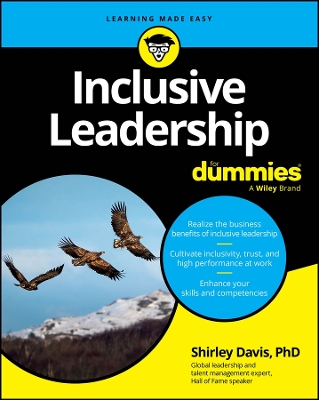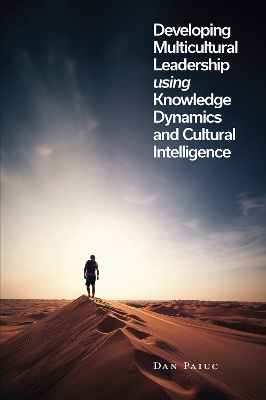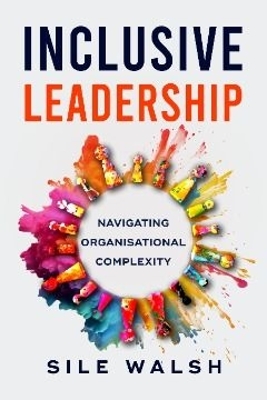Inclusive Leadership For Dummies
 portes grátis
portes grátis
Inclusive Leadership For Dummies
Davis, Dr. Shirley
John Wiley & Sons Inc
05/2024
336
Mole
Inglês
9781394197231
15 a 20 dias
666
About This Book 2
Foolish Assumptions 3
Icons Used in This Book 3
Beyond the Book 4
Where to Go from Here 4
Part 1: Getting Started with Inclusive Leadership 7
Chapter 1: Establishing the Basics of Leadership and Inclusion 9
Knowing Why Inclusive Leadership is Important 10
Summarizing Key Workforce Shifts 13
Understanding Inclusive Terminology 15
Belonging 15
BIPOC 15
Diversity 16
Equity and Equality 17
Implicit bias 18
Inclusion 18
Intersectionality 18
Microaggressions 19
Neurodiversity 19
Phobias and -isms 19
Looking at Leadership Models and Frameworks 20
Chapter 2: Revealing What the New Generation of Talent Needs at Work 25
Understanding the Workforce Demographics of the Future 26
Addressing the Needs of the Changing Workforce 29
Honing the Competencies and Key Traits of an Inclusive Leader 33
Tackling the Challenges of Leading a More Diverse Workforce 35
Unconscious bias 35
Communication barriers 36
Cultural differences impeding teamwork 36
Retaining diverse talent 37
Developing inclusive leaders from within 37
Recognizing the Benefits that Top Talent of the Future Brings 38
Chapter 3: Making the Business Case for More Inclusive Leaders 41
Accessing a Larger Talent Pool 42
Enhancing Financial Performance and Company Reputation 44
Boosting Employee Engagement, Productivity, and Retention 45
Driving Innovation and Creativity 47
Growing Customer Loyalty and Expanding New Markets 49
Digging into Examples of Inclusive Leadership in Action 50
Biases and lack of visible diversity 50
Microaggressions and a hostile work environment 51
Chapter 4: How Inclusive Are You? Assessing Your Effectiveness as a Leader 53
Understanding Why Assessing Yourself is Important 54
Identifying Your Passion and Ability to be an Inclusive Leader 57
Assessing Your Unique Leadership Skills and Talents 58
Identifying Your Leadership Style 59
Selfless leadership style 59
Transformational leadership style 60
Transactional leadership style 60
"Laissez Faire" leadership style 61
Democratic leadership style 61
Situational leadership style 62
Building Your Personal Brand and Reputation 62
Why building a strong personal brand matters 63
Why your reputation as a leader matters 63
Strengthening your personal leadership brand 64
Diagnosing Your Level of Inclusiveness 66
Part 2: Developing the Skills to Lead Yourself 67
Chapter 5: Getting Clear on Your Purpose, Vision, and Values 69
Knowing the Importance of Your Purpose 70
Asking the Right Questions to Uncover Your "Why" 71
Getting Grounded on Your Personal Vision Statement 74
Establishing and Living Your Personal Values 75
Chapter 6: Minimizing Your Own Biases and Microaggressions 79
Defining Unconscious Bias 80
Figuring Out Microaggressions 82
Understanding Intent versus Impact 84
Identifying the Effects of Bias in the Workplace 86
Sourcing and selecting new talent 87
Onboarding and orienting new talent 88
Developing, promoting, and engaging talent 89
Communicating with talent 90
Retaining top talent 90
Interrupting Biased Behaviors 91
Step 1: Recognize when a bias has occurred 92
Step 2: Validate or invalidate your bias 93
Step 3: Chart your path forward 94
Chapter 7: Leading with Authenticity and Transparency 97
Defining Authenticity and Transparency and Seeing How They Relate 98
Authenticity 98
Transparency 99
Understanding Why Some Leaders Shy Away from Authenticity and Transparency 100
Analyzing Your Effectiveness as an Authentic and Transparent Leader 100
Mastering Authentic and Transparent Leadership 105
Chapter 8: Demonstrating Empathy and Emotional Intelligence 109
Understanding Empathy and its Role in Leadership 110
Digging into the Three Types of Workplace Empathy 112
Cognitive empathy 112
Emotional empathy 113
Compassionate empathy 114
Being an empathetic leader 114
Figuring Out the Four Domains of Emotional Intelligence 115
Self-awareness 116
Self-control 117
Social awareness 118
Relationship management 119
Discovering Your Level of Empathy and Emotional Intelligence 120
Realizing the Need for Greater Empathy and Emotional Intelligence 124
Applying Empathy and Emotional Intelligence in the Workplace 127
Chapter 9: Developing Cross-Cultural Competence and Cultural Intelligence 129
Defining Culture 130
Knowing the Difference between Cultural Competence and Cultural Intelligence 132
Discovering Why these Competencies Matter to Leaders 135
Mapping the Two Mindsets of Intercultural Competence 136
Monocultural mindset 136
Intercultural mindset 136
Exploring the Five Orientations of Cultural Competence 137
Denial 138
Polarization 139
Minimization 140
Acceptance 141
Adaptation 142
Becoming a Culturally Competent and Culturally Intelligent Leader 143
Part 3: Leading Others 145
Chapter 10: Assembling and Leading Diverse and Hybrid Teams 147
Sourcing Diverse Talent 148
Acclimating New Hires to the Team 150
Leading Your Team Through Five Stages of Development 151
Forming 151
Storming 152
Norming 153
Performing 154
Adjourning 155
Figuring out what stage your team is at 156
Maximizing the Benefits of a Diverse Team 157
Creativity and problem solving 158
Collaboration 158
Increased business performance 158
Engagement and retention 159
Fostering an Environment of Trust and Belonging 159
Leading Across Differences and Distances 160
Avoiding Common Pitfalls when Leading a Diverse Team 164
Chapter 11: Establishing Trust and Psychological Safety 167
Defining Trust and Psychological Safety 168
Outlining the Four Stages of Psychological Safety 169
Inclusion Safety 170
Learner Safety 171
Contributor Safety 172
Challenger Safety 173
Realizing the Benefits of a Trusting and Psychologically Safe Workplace 175
Identifying the Factors that Drive and Undermine Psychological Safety 176
Factors that undermine trust and psychological safety 176
Factors that cultivate trust and psychological safety 178
Creating Psychological Safety 179
Increasing Inclusion Safety 179
Increasing Learner Safety 180
Increasing Contributor Safety 180
Increasing Challenger Safety 180
Measuring Psychological Safety 181
Recognizing Best Practice Companies 182
Pixar: "Fail Early and Often" 182
Eileen Fisher: "Leadership is About Listening" 183
Barry-Wehmiller: "What We Do Matters" 183
X Development Llc: "shoot for the Moon" 184
Chapter 12: Coaching and Giving Feedback 185
Acknowledging the Impact of Not Providing Coaching and Feedback 186
Understanding the Difference between Coaching and Feedback 187
Customizing Your Coaching Approach using Situational Leadership 189
Telling 190
Selling 190
Participating 191
Delegating 191
Avoiding Common Feedback Pitfalls 191
Being unprepared 192
Failing to establish trust 192
Ignoring cultural context 192
Treating everyone the same way 193
Avoiding reciprocal feedback 193
Giving Great Feedback 194
Before the conversation 194
During the conversation 194
After the conversation 196
Chapter 13: Communicating Inclusively 199
Recognizing the Benefits of Inclusive Communication 200
Understanding the Impact of Non-Inclusive Language 200
Working With Human Resources to Promote Inclusive Language 204
Practicing Inclusive Communication 205
Chapter 14: Dealing with Conflict 207
Addressing the Reasons We Avoid Conflict 207
Normalizing Conflict as a Tool for Higher Performance 208
Identifying the Topics We Tend to Avoid 209
Seeing the Benefits of Engaging in Uncomfortable Conversations 212
Interpreting Two Models for Managing Conflict 213
Thomas-Kilman conflict modes 213
Intercultural Conflict Styles 216
Applying Best Practices to Real-World Scenarios 219
Do you need to engage? 220
What is the source of the conflict? Where do you stand? 220
How will you engage? 220
What is the preferred outcome? 221
What barriers currently exist? 221
What are the implications globally or among multiple stakeholders? 222
Part 4: Cultivating a Culture of Inclusion and High Performance 223
Chapter 15: Assessing the Employee Experience 225
Defining the Employee Experience 226
Evaluating the Current State of Your Company Culture 228
Checking Out the Culture Spectrum 230
Exploring the Red Zone 230
Stepping into the Green Zone 233
Applying Strategies to Address Gaps in the Employee Experience 235
Demonstrating Accountability as a Leader 236
Consistency matters 238
Taking ownership matters 238
Sound decision making matters 239
Providing feedback matters 240
Communicating effectively matters 241
Chapter 16: Tracking and Measuring Inclusion Initiatives 243
Bridging the Accountability Gap 244
Recognizing the Importance of Measuring Inclusion Initiatives 245
Looking at Ways to Measure Inclusion Initiatives 246
Recruitment and selection 246
Development, advancement, and retention 247
Employee engagement and job satisfaction 249
Compensation and benefits 250
Employer brand 251
Supply chain and procurement 253
Avoiding Common Pitfalls When Measuring Inclusion Initiatives 254
Chapter 17: Advocating for Inclusion 257
Differentiating Between Advocacy and Activism 257
Understanding Why Advocacy Is Needed 259
Defining the Role of an Ally 261
Identifying Multiple Methods of Advocating 262
Launching and leading Employee Resource Groups 262
Championing Diversity, Equity, and Inclusion education 264
Mentoring and sponsoring diverse talent 265
Seeking and leveraging diverse perspectives and solutions 267
Demonstrating courage in difficult and unpopular situations 268
Chapter 18: Applying an Equity Lens and Inclusive Mindset in Decision Making 271
Differentiating Equity from Equality 272
Understanding Why an Equity Lens Matters 274
Asking the Right Questions When Applying an Equity Lens 276
In leading people 277
In everyday decision making 278
In recruiting 279
In onboarding and orienting new talent 280
In education and training 281
In development and advancement 281
In organizational communications 282
In community and customer relations 283
In marketing and branding 284
Developing Competencies for Applying an Equity Lens 284
Part 5: the Part of Tens 289
Chapter 19: Ten Mistakes to Avoid if You Want to Be an Inclusive Leader 291
Lacking Vision and Goals 292
Treating Everyone the Same 292
Showing Favoritism 293
Acting Inflexibly 294
Being a Know-It-All 294
Overlooking Recognition or Reward 295
Failing to Provide Feedback to All 295
Overlooking Microaggressions 296
Ignoring Psychological Safety 296
Failing to Develop Cultural Competence 297
Chapter 20: Ten Things That Inclusive Leaders Must Navigate 299
Leading through Global Socio-Political and Economic Unrest 299
Enhancing The Employee Experience 300
Attracting and Retaining Top Diverse Talent 301
Supporting Mental Health and Emotional Well-Being 301
Upskilling to Meet the Needs of the New Generation of Talent 302
Transforming Workplace Culture to be More Inclusive 302
Working with Artificial Intelligence and Automation 303
Managing Remote and Flexible Work 303
Leading Change in Tumultuous Times 304
Saying the Wrong Thing 305
Chapter 21: Ten Practices that Inclusive Organizations Have in Common 307
Maintaining a Positive Employer Brand and Reputation 308
Embedding Inclusion into Strategic Priorities 308
Assessing Employee Experience 309
Leading Change with Agility and Resilience 309
Educating and Developing Leaders at All Levels Consistently 310
Removing Organizational Barriers to Equity and Inclusion 310
Fostering Trust, Psychological Safety, and Well-Being 311
Assembling and Leading Diverse Teams for Maximum Performance 311
Tracking, Measuring, and Holding Each Other Accountable 312
Recognizing and Rewarding Top Performance 312
Index 313
About This Book 2
Foolish Assumptions 3
Icons Used in This Book 3
Beyond the Book 4
Where to Go from Here 4
Part 1: Getting Started with Inclusive Leadership 7
Chapter 1: Establishing the Basics of Leadership and Inclusion 9
Knowing Why Inclusive Leadership is Important 10
Summarizing Key Workforce Shifts 13
Understanding Inclusive Terminology 15
Belonging 15
BIPOC 15
Diversity 16
Equity and Equality 17
Implicit bias 18
Inclusion 18
Intersectionality 18
Microaggressions 19
Neurodiversity 19
Phobias and -isms 19
Looking at Leadership Models and Frameworks 20
Chapter 2: Revealing What the New Generation of Talent Needs at Work 25
Understanding the Workforce Demographics of the Future 26
Addressing the Needs of the Changing Workforce 29
Honing the Competencies and Key Traits of an Inclusive Leader 33
Tackling the Challenges of Leading a More Diverse Workforce 35
Unconscious bias 35
Communication barriers 36
Cultural differences impeding teamwork 36
Retaining diverse talent 37
Developing inclusive leaders from within 37
Recognizing the Benefits that Top Talent of the Future Brings 38
Chapter 3: Making the Business Case for More Inclusive Leaders 41
Accessing a Larger Talent Pool 42
Enhancing Financial Performance and Company Reputation 44
Boosting Employee Engagement, Productivity, and Retention 45
Driving Innovation and Creativity 47
Growing Customer Loyalty and Expanding New Markets 49
Digging into Examples of Inclusive Leadership in Action 50
Biases and lack of visible diversity 50
Microaggressions and a hostile work environment 51
Chapter 4: How Inclusive Are You? Assessing Your Effectiveness as a Leader 53
Understanding Why Assessing Yourself is Important 54
Identifying Your Passion and Ability to be an Inclusive Leader 57
Assessing Your Unique Leadership Skills and Talents 58
Identifying Your Leadership Style 59
Selfless leadership style 59
Transformational leadership style 60
Transactional leadership style 60
"Laissez Faire" leadership style 61
Democratic leadership style 61
Situational leadership style 62
Building Your Personal Brand and Reputation 62
Why building a strong personal brand matters 63
Why your reputation as a leader matters 63
Strengthening your personal leadership brand 64
Diagnosing Your Level of Inclusiveness 66
Part 2: Developing the Skills to Lead Yourself 67
Chapter 5: Getting Clear on Your Purpose, Vision, and Values 69
Knowing the Importance of Your Purpose 70
Asking the Right Questions to Uncover Your "Why" 71
Getting Grounded on Your Personal Vision Statement 74
Establishing and Living Your Personal Values 75
Chapter 6: Minimizing Your Own Biases and Microaggressions 79
Defining Unconscious Bias 80
Figuring Out Microaggressions 82
Understanding Intent versus Impact 84
Identifying the Effects of Bias in the Workplace 86
Sourcing and selecting new talent 87
Onboarding and orienting new talent 88
Developing, promoting, and engaging talent 89
Communicating with talent 90
Retaining top talent 90
Interrupting Biased Behaviors 91
Step 1: Recognize when a bias has occurred 92
Step 2: Validate or invalidate your bias 93
Step 3: Chart your path forward 94
Chapter 7: Leading with Authenticity and Transparency 97
Defining Authenticity and Transparency and Seeing How They Relate 98
Authenticity 98
Transparency 99
Understanding Why Some Leaders Shy Away from Authenticity and Transparency 100
Analyzing Your Effectiveness as an Authentic and Transparent Leader 100
Mastering Authentic and Transparent Leadership 105
Chapter 8: Demonstrating Empathy and Emotional Intelligence 109
Understanding Empathy and its Role in Leadership 110
Digging into the Three Types of Workplace Empathy 112
Cognitive empathy 112
Emotional empathy 113
Compassionate empathy 114
Being an empathetic leader 114
Figuring Out the Four Domains of Emotional Intelligence 115
Self-awareness 116
Self-control 117
Social awareness 118
Relationship management 119
Discovering Your Level of Empathy and Emotional Intelligence 120
Realizing the Need for Greater Empathy and Emotional Intelligence 124
Applying Empathy and Emotional Intelligence in the Workplace 127
Chapter 9: Developing Cross-Cultural Competence and Cultural Intelligence 129
Defining Culture 130
Knowing the Difference between Cultural Competence and Cultural Intelligence 132
Discovering Why these Competencies Matter to Leaders 135
Mapping the Two Mindsets of Intercultural Competence 136
Monocultural mindset 136
Intercultural mindset 136
Exploring the Five Orientations of Cultural Competence 137
Denial 138
Polarization 139
Minimization 140
Acceptance 141
Adaptation 142
Becoming a Culturally Competent and Culturally Intelligent Leader 143
Part 3: Leading Others 145
Chapter 10: Assembling and Leading Diverse and Hybrid Teams 147
Sourcing Diverse Talent 148
Acclimating New Hires to the Team 150
Leading Your Team Through Five Stages of Development 151
Forming 151
Storming 152
Norming 153
Performing 154
Adjourning 155
Figuring out what stage your team is at 156
Maximizing the Benefits of a Diverse Team 157
Creativity and problem solving 158
Collaboration 158
Increased business performance 158
Engagement and retention 159
Fostering an Environment of Trust and Belonging 159
Leading Across Differences and Distances 160
Avoiding Common Pitfalls when Leading a Diverse Team 164
Chapter 11: Establishing Trust and Psychological Safety 167
Defining Trust and Psychological Safety 168
Outlining the Four Stages of Psychological Safety 169
Inclusion Safety 170
Learner Safety 171
Contributor Safety 172
Challenger Safety 173
Realizing the Benefits of a Trusting and Psychologically Safe Workplace 175
Identifying the Factors that Drive and Undermine Psychological Safety 176
Factors that undermine trust and psychological safety 176
Factors that cultivate trust and psychological safety 178
Creating Psychological Safety 179
Increasing Inclusion Safety 179
Increasing Learner Safety 180
Increasing Contributor Safety 180
Increasing Challenger Safety 180
Measuring Psychological Safety 181
Recognizing Best Practice Companies 182
Pixar: "Fail Early and Often" 182
Eileen Fisher: "Leadership is About Listening" 183
Barry-Wehmiller: "What We Do Matters" 183
X Development Llc: "shoot for the Moon" 184
Chapter 12: Coaching and Giving Feedback 185
Acknowledging the Impact of Not Providing Coaching and Feedback 186
Understanding the Difference between Coaching and Feedback 187
Customizing Your Coaching Approach using Situational Leadership 189
Telling 190
Selling 190
Participating 191
Delegating 191
Avoiding Common Feedback Pitfalls 191
Being unprepared 192
Failing to establish trust 192
Ignoring cultural context 192
Treating everyone the same way 193
Avoiding reciprocal feedback 193
Giving Great Feedback 194
Before the conversation 194
During the conversation 194
After the conversation 196
Chapter 13: Communicating Inclusively 199
Recognizing the Benefits of Inclusive Communication 200
Understanding the Impact of Non-Inclusive Language 200
Working With Human Resources to Promote Inclusive Language 204
Practicing Inclusive Communication 205
Chapter 14: Dealing with Conflict 207
Addressing the Reasons We Avoid Conflict 207
Normalizing Conflict as a Tool for Higher Performance 208
Identifying the Topics We Tend to Avoid 209
Seeing the Benefits of Engaging in Uncomfortable Conversations 212
Interpreting Two Models for Managing Conflict 213
Thomas-Kilman conflict modes 213
Intercultural Conflict Styles 216
Applying Best Practices to Real-World Scenarios 219
Do you need to engage? 220
What is the source of the conflict? Where do you stand? 220
How will you engage? 220
What is the preferred outcome? 221
What barriers currently exist? 221
What are the implications globally or among multiple stakeholders? 222
Part 4: Cultivating a Culture of Inclusion and High Performance 223
Chapter 15: Assessing the Employee Experience 225
Defining the Employee Experience 226
Evaluating the Current State of Your Company Culture 228
Checking Out the Culture Spectrum 230
Exploring the Red Zone 230
Stepping into the Green Zone 233
Applying Strategies to Address Gaps in the Employee Experience 235
Demonstrating Accountability as a Leader 236
Consistency matters 238
Taking ownership matters 238
Sound decision making matters 239
Providing feedback matters 240
Communicating effectively matters 241
Chapter 16: Tracking and Measuring Inclusion Initiatives 243
Bridging the Accountability Gap 244
Recognizing the Importance of Measuring Inclusion Initiatives 245
Looking at Ways to Measure Inclusion Initiatives 246
Recruitment and selection 246
Development, advancement, and retention 247
Employee engagement and job satisfaction 249
Compensation and benefits 250
Employer brand 251
Supply chain and procurement 253
Avoiding Common Pitfalls When Measuring Inclusion Initiatives 254
Chapter 17: Advocating for Inclusion 257
Differentiating Between Advocacy and Activism 257
Understanding Why Advocacy Is Needed 259
Defining the Role of an Ally 261
Identifying Multiple Methods of Advocating 262
Launching and leading Employee Resource Groups 262
Championing Diversity, Equity, and Inclusion education 264
Mentoring and sponsoring diverse talent 265
Seeking and leveraging diverse perspectives and solutions 267
Demonstrating courage in difficult and unpopular situations 268
Chapter 18: Applying an Equity Lens and Inclusive Mindset in Decision Making 271
Differentiating Equity from Equality 272
Understanding Why an Equity Lens Matters 274
Asking the Right Questions When Applying an Equity Lens 276
In leading people 277
In everyday decision making 278
In recruiting 279
In onboarding and orienting new talent 280
In education and training 281
In development and advancement 281
In organizational communications 282
In community and customer relations 283
In marketing and branding 284
Developing Competencies for Applying an Equity Lens 284
Part 5: the Part of Tens 289
Chapter 19: Ten Mistakes to Avoid if You Want to Be an Inclusive Leader 291
Lacking Vision and Goals 292
Treating Everyone the Same 292
Showing Favoritism 293
Acting Inflexibly 294
Being a Know-It-All 294
Overlooking Recognition or Reward 295
Failing to Provide Feedback to All 295
Overlooking Microaggressions 296
Ignoring Psychological Safety 296
Failing to Develop Cultural Competence 297
Chapter 20: Ten Things That Inclusive Leaders Must Navigate 299
Leading through Global Socio-Political and Economic Unrest 299
Enhancing The Employee Experience 300
Attracting and Retaining Top Diverse Talent 301
Supporting Mental Health and Emotional Well-Being 301
Upskilling to Meet the Needs of the New Generation of Talent 302
Transforming Workplace Culture to be More Inclusive 302
Working with Artificial Intelligence and Automation 303
Managing Remote and Flexible Work 303
Leading Change in Tumultuous Times 304
Saying the Wrong Thing 305
Chapter 21: Ten Practices that Inclusive Organizations Have in Common 307
Maintaining a Positive Employer Brand and Reputation 308
Embedding Inclusion into Strategic Priorities 308
Assessing Employee Experience 309
Leading Change with Agility and Resilience 309
Educating and Developing Leaders at All Levels Consistently 310
Removing Organizational Barriers to Equity and Inclusion 310
Fostering Trust, Psychological Safety, and Well-Being 311
Assembling and Leading Diverse Teams for Maximum Performance 311
Tracking, Measuring, and Holding Each Other Accountable 312
Recognizing and Rewarding Top Performance 312
Index 313
















